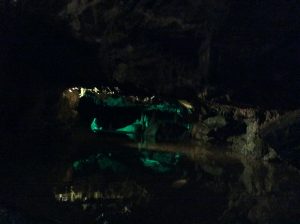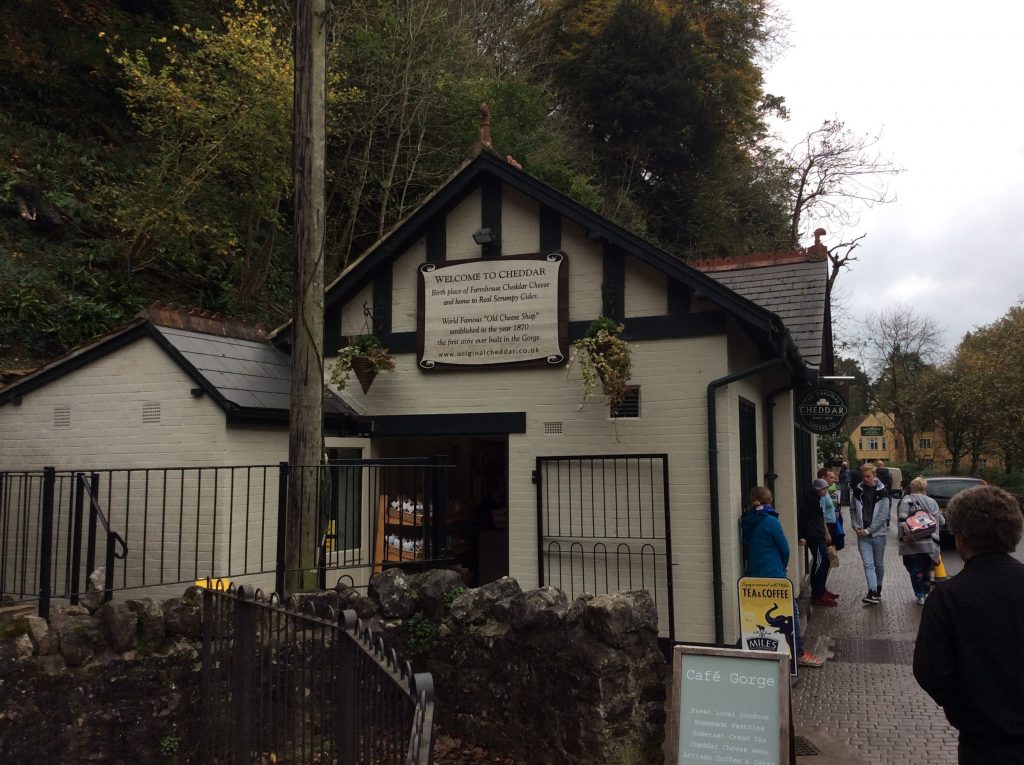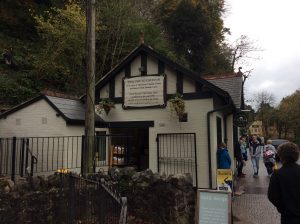
The little village of Cheddar gives its name to the world famous cheese and a spectacular gorge and caves that cuts through Mendip Hills in Somerset.

Over a million years ago, during cold periods, the permafrost stopped water seeping through limestone, and when it got warmer, the water flowed on the surface and cut a gorge, which is currently 137 deep at its lowest point. Then it got even warmer, and water flowed through limestone, forming spectacular caves. 40,000 years ago ancient people lived in the caves, leaving for us faint traces of their lives.

This was the home of the Mesolithic Cheddar Man, who lived 9,000 years ago. This is the oldest complete human skeleton found in Britain (discovered in 1903). The original bones are in the Natural History Museum, but a spectacular reconstruction is on display in Gough’s Cave, the main tourist attraction in Cheddar Gorge.
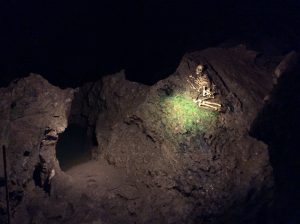
Although the smaller cave was discovered in 1837, the larger Gough’s Cave was dug up from debris at the end of 19th century by Richard Cox Gough. He opened it to the public, installing electrical lighting in 1899. The cave is full of enchanting nooks and crannies, spectacular caves with limestone deposit formations, some bats, stalactites and stalagmites, and, of course, the world famous cheese, which is being matured in the cave at the constant temperature of 11C throughout the year.
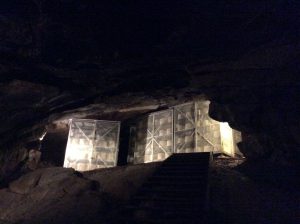
A small part of the cave, featuring the most spectacular chambers and rock formations is open to the public. The whole system stretches for over 2,000 meters, to the depth of 90 metres, and is largely inaccessible due to flooding by Cheddar Yeo – the largest underground river system in Britain, which floods the caves from time to time.
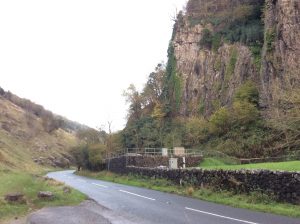
Stalactites (hanging from the top) and stalagmites (growing upwards) are deposits of water soluble limestone, and the way they are displayed in pools of water, creating magical reflections, is the most theatrical aspect of the visit to the caves.

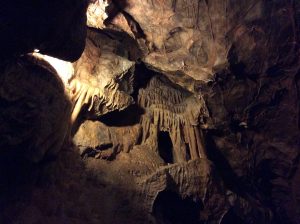


Having got there in the afternoon, we did not manage to visit the whole complex – the smaller cave with an audio/video experience or the climb to the viewing platform at the top, – so definitely worth a return visit.


